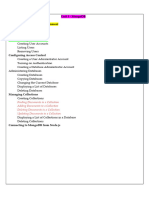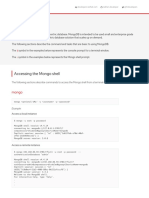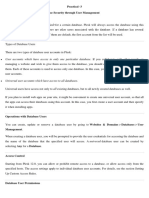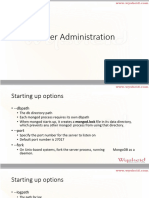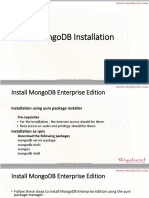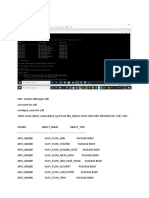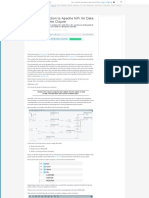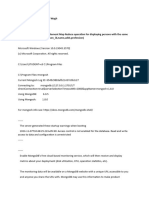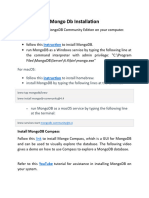0% found this document useful (0 votes)
39 views36 pagesSecuring MongoDB
Securing MongoDB discusses authentication and authorization in MongoDB, how to create administrator and regular users, enable authentication, connect with authentication, manage roles and privileges for users and roles, and lists some built-in roles in MongoDB like read, readWrite, dbAdmin, userAdmin, and clusterAdmin.
Uploaded by
srinu katamsCopyright
© © All Rights Reserved
We take content rights seriously. If you suspect this is your content, claim it here.
Available Formats
Download as PDF, TXT or read online on Scribd
0% found this document useful (0 votes)
39 views36 pagesSecuring MongoDB
Securing MongoDB discusses authentication and authorization in MongoDB, how to create administrator and regular users, enable authentication, connect with authentication, manage roles and privileges for users and roles, and lists some built-in roles in MongoDB like read, readWrite, dbAdmin, userAdmin, and clusterAdmin.
Uploaded by
srinu katamsCopyright
© © All Rights Reserved
We take content rights seriously. If you suspect this is your content, claim it here.
Available Formats
Download as PDF, TXT or read online on Scribd
/ 36




